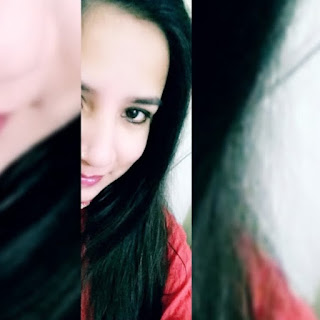Pakistan is famous for a lot of negative reasons in the world. One of the most pervasive world belief is that the country is plagued with religious intolerance where minorities such as Christians and Hindus find it hard to survive.
Here we present an interview with Dr. Rajesh Kumar, a Pakistani Hindu from Jamshoro, Sindh. He candidly replies various questions asked from him and documents his life as a Hindu in Pakistani.
Q: Could you tell us about you, where you live, a bit about your family, what you do, etc?
I am Dr. Rajesh Kumar, Youth and Minority rights activist, graduated as a Medical Doctor from Liaquat university of Medical & Health Sciences, Jamshoro, Sindh. Pursuing post graduation in the field of Psychiatric Medicine from the same insitution.
I was born in a town namely Thana Bula Khan, a Hindu Dominant town of Sindh, serving the biggest economy to the country because of most people into Business.
Half of family is into medical profession, so my father inspired me to be a medical Doctor like him. Since very begining of college days, I have been actively participatig in Youth led conferences about Interfaith Harmony, Democracy, Leadership, Peace, Climate Change and Youth empowement in Pakistan, India and United states.
Q: Are there many Hindu families in Pakistan?
In Pakistan, Hindus are living very peacefully since thousands of years around the Indus Valley. Hindus were the real owners of the land. Since ages, Hindus have a very rich background. They are business oriented, educationists, philanthropists who always believed in the message of Humanity, Interfaith Harmony, Tranquility and Peace. Currently Hindus make up around two percent of the country’s 200 million people and they mostly live in southern Sindh province.
People compare pre and post 1971 statistics and assume that the Hindu population in Pakistan has drastically reduced when it is clear that Pakistan was dismembered in 1971 and the statistics would of course be different for only the western part of what was total of east and west Pakistan then.
Q: Have you ever been in a situation where you have been asked to ‘Go to India’ because you are a Hindu?
In my case, answer would be very simple, Just because I have been born into a particular religion, no one has ever told me off that I belong to a certain country.
Infact in cities other than my birth city, I am treated like a celebrity. People are curious about the hindu customs and cultures and ask me a lot of questions. Indeed some people have come to shake hand with me only to see what a Hindu looks like.
But if one were to believe the media, then we are victims of religious extremism, Intolerance, religious discrimination and forceful religious conversion. Despite of having some basic and minor issues, We do celebrate each of our Festival including Dewali, Holi, Thadri, Raksha Bandhan with full Zeal and Zest with our fellow Countrymen.
I vividly remember very few-off situations when during a cricket match I was asked who I supported. By then, I failed to comprehend the mindset behind the question.
I personally believe that there are ignorant people on both sides of the border. Lunatic people using these ‘Go to India’ or ‘Go to Pakistan’ tags and those setting examples of “Ghar Wapsi” and “love jihad” are doing nothing but are only bringing disgrace to their communities and country.
Q: Do you think Hindus and Muslims can live peacefully?
Since I belong to Sindh, I believe in the proposition that Hindus and Muslims can live peacefully. The cultural values of Sindh are mixture of Sufi Islam & Hinduism. Many cities of Sindh are exemplary in that. At times, a number of Muslim friends ask me, if they can join me for holi celebrations and can share the joys. Similarly, I feel no hesitation in celebrating the Eid with my Pakistani brothers and sisters.
I believe that only thing which separates us from each other is the borders which we make in our mind and here I will second the Nelson Mandela that “No one is born hating another person because of the color of his skin, or his background, or his religion. People must learn to hate, and if they can learn to hate, they can be taught to love, for love comes more naturally to the human heart than its opposite” .
Q: What are your views on the India – Pakistan hatred that has been going on for so long?
It’s the political divide. Politicians, on both sides of the border, have been harboring hatred and mistrust about each other from the last sixty-nine years for their own selfish interests. I went to India last year and was received with a lot of love. I, similarly, have witnessed my Indian friends in Pakistan being received with the same spirit. For no reason on earth should common Indians and Pakistanis hate each other. Also, for me religion is a secondary component of my identity. I am first a Pakistan then a Hindu.
Q: Do you think Pakistanis want peace or want war?
Who wants to go into war? I mean who even likes war like situations? What do wars give us? Bloodshed, loss of loved ones. All religions teach peace, mercy, and love. Religion is a very strong force in the South Asian region and has a great influence on the masses. An average Pakistan wants peace within his/her country as well as with the neighboring countries.
























